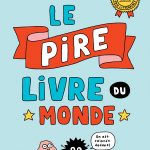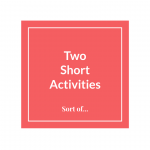Learning about Edcamp today really resonated with my belief system in life. I like when we try to create space that are more horizontals, that are empowering and collaborative. It is really interesting to see how we can get together and use everybody’s knowledge to discuss, share, and make each other better educators.
So, today we created an EdCamp and it was truly interesting. Even though, we didn’t have a lot of diversity in our groups, it was impressive of how everybody had something interesting to contribute. Between Mindfulness, Inclusivity and What makes a great teacher, I chose Inclusivity.
Inclusivity in the classroom
We discussed on how inclusivity’s meaning will depend on the class. We reminded each other that sometimes there is no clear-cut designation, and we shouldn’t try to categorize them. A lot of personal experience were shared as a way of explaining how we sometimes feel unequipped and overwhelmed by the needs of the designated students because we don’t have the knowledge to help them progress and succeed in our classes. The lack of help and EAs were also pointed out.
We also discussed on how we could create space in our classroom to not just include students with designation, but also have them participate in our class, socialize, and learn with us. We were also reminded how more often than not, accommodation were not made where they were needed the most like Food class (which is such an important life skill) because they learn differently and they cannot learn by themselves from a computer. We also discussed how sometimes, with some students, inclusivity also means respecting their specific needs and not include them in “regular” classes because it doesn’t work for them.
“you got to teach with high structure and a lot of warmth”
One of us who were more experienced in that subject shared with us one of the most important advice they ever got: “you got to teach with high structure and a lot of warmth”! We also discussed what differentiation looks like in a classroom and how to accommodate and individualize while reaffirming the objectives, goals and learning outcomes.
We also talked about what it means to have the same learning outcomes. One of us suggested to have wide rubric with spaces for modifications and adaptations to remain flexible and offer choices to students. Regardless of the designation or the learning style, we should make rubrics for assessment a common, but broad goal for your class while remaining open for modifications on the criteria or the way to get there. Because designation or not, success looks different for every students.
If you are passionate like us about Inclusivity in the classroom, here is a great resource: https://bcedaccess.com/.


